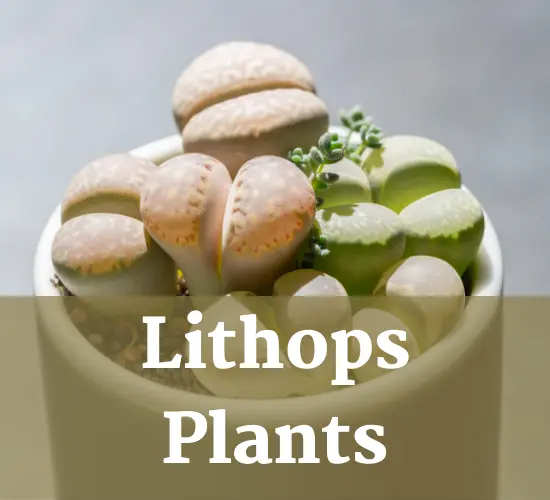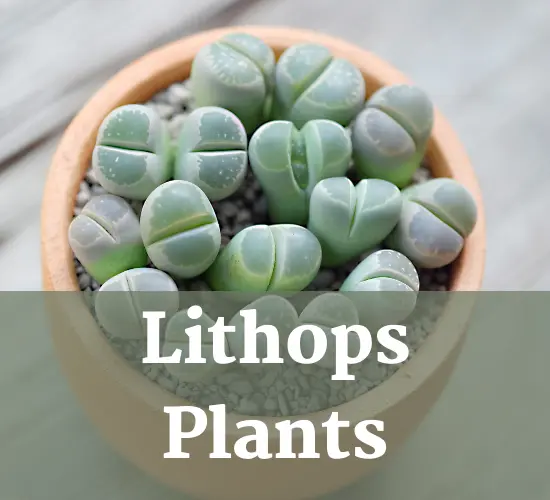Table of Contents
Lithops Care
Living Stones, scientifically known as Lithops, are a fascinating type of Succulent that adds a unique and eye-catching touch to any garden or indoor plant collection. These plants have evolved to resemble stones or colorful pebbles, allowing them to blend seamlessly with their arid and rocky surroundings.
Not only do they offer an aesthetically pleasing addition to your space, but their shape also serves as a natural protection against herbivores.
These low-maintenance succulents require a specific care routine that is surprisingly simple and easy to follow. They thrive in direct sunlight and can withstand minimal watering, making them perfect for individuals seeking a plant that requires minimal attention. Additionally, Lithops have the remarkable ability to adapt and thrive in average household humidity levels.
This characteristic makes them versatile enough to be placed on window ledges, desks, or shelves, adding a touch of quirkiness to any environment.
Whether you are a seasoned plant enthusiast or just embarking on your green thumb journey, Lithops is an excellent choice for those seeking a plant that offers both aesthetic appeal and ease of care. Their unique appearance and low-maintenance nature make them a captivating addition to any space, satisfying the subconscious desire for freedom that many individuals possess.
In the following article, we will explore the world of Living Stones, delving into their characteristics, care requirements, and the benefits they bring to their surroundings.
Key Takeaways

- Lithops, also known as living stones, are unique succulents that resemble stones or colorful pebbles.
- They require at least 6 hours of direct sunlight every day and should be placed in a south-facing window.
- During spring and summer, let the soil dry completely before watering, and in fall and winter, they require little to no water.
- Lithops are small, easy to care for, and suitable for window ledges, desks, or shelves.
What is Lithops?
Lithops, also known as living stones, are unique succulents native to arid, rocky areas that resemble stones or colorful pebbles. These fascinating plants have evolved to blend in with their surroundings, providing them with protection from herbivores.
Lithops rarely grow taller than an inch above the soil, making them a distinctive addition to any garden or indoor plant collection.
When it comes to growing conditions, Lithops thrive in well-lit areas and require at least 6 hours of direct sunlight every day. They should be placed in a south-facing window to ensure they receive adequate light.
In terms of watering, Lithops have specific needs depending on the season. During spring and summer, it is important to let the soil volume dry completely before watering. However, in fall and winter, Lithops go dormant and require little to no water. This dormant period allows them to conserve energy and prepare for their next growth cycle.
As for propagation methods, Lithops can be propagated through seeds or by separating the offsets, which are small plantlets that grow around the base of the parent plant.
By following these guidelines, you can successfully grow and propagate Lithops, adding a touch of uniqueness to your plant collection.
Care and Maintenance

Native to arid environments, these unique plants require specific care and attention to thrive. Lithops, also known as living stones, are low-maintenance succulents that have evolved to blend in with their surroundings for protection. To ensure their well-being, here are some key guidelines to follow:
Propagation:
- Lithops can be propagated through seeds or by division.
- Seeds should be sown in well-draining soil and kept slightly moist until they germinate.
- Division can be done by carefully separating the offsets from the mother plant and allowing them to dry before planting them in a suitable growing medium. Watering:
Watering:
- Proper watering is crucial for Lithops.
- During the active growing season in spring and summer, it is important to let the soil dry completely between waterings.
- Overwatering can lead to rot, so it is better to underwater than overwater.
- In fall and winter, when Lithops go dormant, they require little to no water
Sunlight:
- Lithops thrive in bright, direct sunlight.
- They need at least 6 hours of direct sunlight every day and should be placed in a south-facing window or outdoors in a sunny spot.
- Insufficient sunlight can result in elongated, weak growth.
Temperature and Humidity:
- These plants prefer temperatures ranging from 50-80°F (10-26°C).
- They can tolerate average household humidity and do not require misting or increased humidity.
- However, it is important to avoid extreme temperature fluctuations, as it can stress the plants.
Common Problems and Solutions:
- Some common issues with Lithops include browning and lack of flowering.
- Browning can be caused by overwatering or fungal diseases.
- To prevent browning, ensure proper watering and provide good air circulation.
- Lack of flowering can be due to insufficient sunlight or improper dormancy conditions.
- To encourage flowering, provide adequate sunlight and maintain the correct dormancy period.
Following these guidelines will help ensure the health and longevity of your Lithops plants. With their unique appearance and low-maintenance nature, these quirky succulents are a delightful addition to any plant collection.
Benefits and Uses
One of the benefits of incorporating Lithops into your plant collection is their ability to blend seamlessly into arid environments due to their unique appearance. These living stones, with their stone-like appearance and colorful patterns, mimic the surrounding rocks and pebbles. This allows them to go unnoticed by herbivores, providing them with a natural protection mechanism.
As a result, Lithops can add a touch of natural beauty to any desk or shelf, effortlessly transforming these spaces into mini desert landscapes.
Another way to utilize the benefits of Lithops is by incorporating them into terrariums. With their small size and low-maintenance nature, Lithops are the perfect addition to these enclosed ecosystems. Their vibrant colors and interesting shapes can create focal points within the terrarium, adding visual interest and diversity to the overall arrangement. Additionally, Lithops’ ability to thrive in well-lit areas makes them an ideal choice for terrariums, as they can easily adapt to the limited sunlight available within these enclosed environments.
Whether used as desk decorations or in terrariums, Lithops offers a unique and captivating presence that can enhance any space with its charming and quirky appeal.
Frequently Asked Questions
Can Lithops be grown outdoors in colder climates?
Lithops can be grown outdoors in colder climates, but it is generally recommended to grow them in indoor containers. Some varieties, such as Lithops Hookeri and Lithops Lesliei, are more adaptable to colder temperatures and can withstand frost.
How often should Lithops be repotted?
Lithops should be repotted every 3-4 years to provide fresh soil and space for growth. Use a well-draining potting mix specifically designed for succulents. Repotting should be done in spring, after the dormant period.
Do Lithops require a specific type of soil?
Lithops have specific soil requirements for optimal growth. The best soil for lithops is a well-draining mix that mimics their natural arid habitat. A blend of coarse sand, perlite, and gritty soil is recommended to prevent water retention and root rot.
Can Lithops be grown in low-light conditions?
Growing lithops indoors can be challenging due to their specific lighting needs. They require at least 6 hours of direct sunlight daily, making them unsuitable for low-light conditions. Adequate lighting is essential for their survival and overall health.